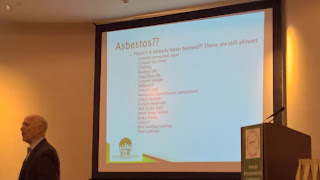Since January 1, 2016,
New York State Department of Labor (NYSDOL) was designated the responsibility of enforcing the
New York State Mold Law, Article 32 "Licensing of Mold Inspection, Assessment, and Remediation Specialists and Minimum Work Standards." Reading Article 32 is like reading stereo instructions (dating ourself on that one), somethings are very clear while others contradict each other, especially in the sections on the minimum work standards. Many people in the industry have said NYSDOL needs to write a rule that will clarify the law. We disagree, though the law is a little confusing, but it is very basic and simple. There is a saying we love "
Be careful what you wish for, you might just get it." (Knowing ourselves, I'm probably misquoting it, but you get the jist) When regulators write rules they then have to go out for public comment and the next you know you get something that is really confusing and lengthy. On November 18, 2017, NYSDOL published two new
fact sheets:
These two fact sheets are very well written and are perfect for providing to your clients to educate them on what to expect regarding the mold inspection/remediation process in New York State. Reviewing and discussing these fact sheets are one of the highlights of our
mold refresher courses.
 |
| Moldy Wall in New Construction |
The interesting fact sheet is the newest one, "
What to Expect When You Hire a Mold Assessor and Mold Remediation Contractor". This fact sheet, in our opinion, actually clarifies some of the confusion with Article 32. The fact sheet was created and designed for the consumer. However, since it was created and designed by NYSDOL, it gives you insight into what NYSDOL expects from the Mold Assessment and Remediation process. These are some of the points we think the fact sheet clarifies:
- The difference between a written passed clearance report and a final status report.
- Can you write a passed clearance report if the underlying cause (if known) is not corrected?
- The responsibilities of the mold assessor.
- The responsibilities of the mold remediation contractor.
- The use of disinfectants, biocides, and antimicrobial coatings.
- What happens if a post-remediation assessment is not wanted?
Those of you who took our initial courses or attended one of our presentations at
Professional Abatement Contractors of New York (PACNY) or at the
Environmental Information Association (EIA), we discussed what we saw as potential liabilities in the law regarding the above issues. This new fact sheet actually clarifies these points without writing any further rules. It provides the mold industry with a guideline of what a client should expect when they hire a Mold Assessor or Mold Remediation Contractor. We look forward to discussing this with you and seeing if you agree.



























